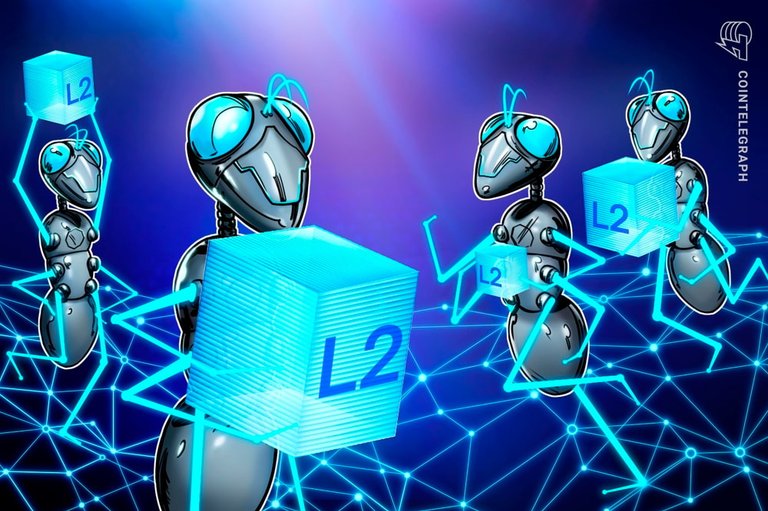Are we overreacting when it comes to L2 blockchains?
When it comes to L2s, there's really only one thing causing an uproar and that's liquidity fragmentation, but more specifically, the painful reality of liquidity being pulled from L1 onto L2s, where at this point, L1 revenues drop due to less transactions happening there.
Of course, money leads the conversations because at the end of the day, incentives are central to the successes of blockchain ecosystems, so if something is stealing away those incentives(revenue) then there's a problem.
Yet, under the hood, the real problem is that a rise in L2s is a direct security threat.
Yes, liquidity is what people see first, but L2s gaining some liquidity from L1s shouldn't be a problem if it didn't directly threaten the security of the L1 because less revenue, means less incentives for L1 validators and when liquidity moves to L2s, business developers will too, essentially leading to L2 contracts being the only addresses transacting on an L1.
This is what this all looks like long term and it's something worth discussing more frequently because a lot of people are going to misunderstand the situation and throw false indicators of why this is all okay.
For instance, a recent opinion blog on Cointelegraph titled “Don’t believe the noise: There can never be too many L2s” argues that the rise of Ethereum L2s isn't a problem but a sign of healthy growth and innovation.
Intrigued by the title, I of course went through to read it and I found from the very beginning that this was just a misunderstanding of what the risks associated with the rise of L2s really is.
Some of the most outspoken critics of L2s argue that L2s are redundant, but this is narrow thinking. In many ways, the idea that creating new L2s should be slowed down is like arguing that there were too many websites in 1998. The proliferation of L2s is not causing the Web3 space to become overly bloated or fragmented at all. The number of chains today isn’t too many. It’s laughably few, and right now is the early innings of a multi-decade explosion in specialized, modular blockchain infrastructure.
The first flaw with this opinion blog is in the above section.
First off, nothing about L2s is similar to having a lot of websites. A growing number of websites does not directly hurt anyone's revenue, if anything, it's an event of potential more revenue for hosting companies.
So it really is a flawed comparison to make.
That said, nobody said that web3 is fragmented by L2s, only Ethereum liquidity is being fragmented by L2s. But even the use of the word “fragmentation” creates an incomplete picture of the situations because sometimes fragmentation is good and the first problem with what is happening with L2s is that it takes liquidity away from the L1.
Certainly, the security of these funds comes into question at some point and that is where the fragmentation of liquidity argument can become relevant because liquidity leaves self-custody to multiple contract addresses that could be exploited.
Moving on, if you read through the blog here, you'd find that the writer goes on to discuss what is essential “appchains” but used the term “specialized L2s” highlighting the various recent developments and release of L2s by traditional institutions.
His understanding is that we need more specificialized chains and that is essentially saying we need more appchains and that I can agree to but he seems to think that this is what L2s are.
L2s are not specialized chains, they are general purpose and fundamentally meant to be offering some cheap alternative to processing transactions on an L1.
Whether it's an Ethereum or Bitcoin L2, it's fundamentally about taking txs off the L1 mainnet into an environment where fees and speed can be scaled by different chain rules.
Judging by how these things can easily be misunderstood for the other, It's expected that L2s will go through rigorous rebranding at some point to sound more like appchains or they will simply pivot to being application-specific chains.
Being an appchain changes everything because your users are no longer seeking alternatives to the L1 mainnet, they are there to use whatever service is offered by your app.
This means that liquidity flows more frequently on the L1, ensuring the incentives that power security of these networks don't decline.
Scaling L1 has to happen on the L1. We should not be tempted to embrace the idea of these things happening somewhere else.
There's a huge difference between having multiple L1s and having multiple L2s for a limited number of L1s.
More L1s means diverse security options and potentially better building environments of business developers. More L2s is just a giant disaster waiting to happen.
This is another thing the blog post seems to misrepresent.
When we have more L2s, we have one security layer with multiple general purpose chains competing atop it. Whilst more L1s means different security layers, and generally newer tech. That's real options with zero room for a central point of failure.
Posted Using INLEO
